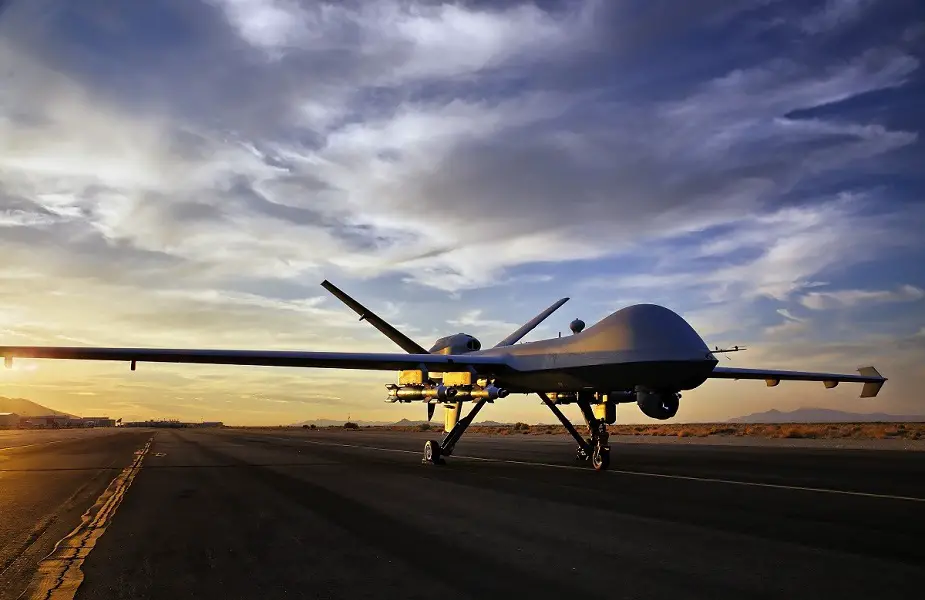Breaking news
MQ-9 Reaper mods targeted to provide capability for near-peer threats.
The Air Force Life Cycle Management Center's MQ-9 Program Office is moving forward with several fleet enhancement capabilities aimed at increasing the MQ-9 Reaper's effectiveness against near-peer adversary threats.
Follow Air Recognition on Google News at this link
 MQ-9 (Picture source: General Atomics)
MQ-9 (Picture source: General Atomics)
The MQ-9 is an unmanned aircraft with intelligence, surveillance, reconnaissance, and strike capability, traditionally used for Counter-Violent Extremist Organization combat operations. That mission is now shifting.
The MQ-9 is demonstrating it is still a relevant platform as it supports new missions in United States European Command and is now set to receive a suite of upgrades to allow the platform to offer a host of new capabilities for combatant commanders and warfighters around the world.
The Air Force will award the first delivery order of planned MQ-9 Multi-Domain Operation aircraft – which will include several new upgrades from previous production builds – to General Atomics Aeronautical Systems in April 2021. The Air Force is also retrofitting a portion of the already fielded MQ-9 fleet to the same M2DO configuration, allowing the Air Force to leverage current fleet numbers to meet future warfighter requirements through the service life of the aircraft.
“Working with Air Combat Command and other stakeholders, the MQ-9 enterprise will add new capabilities to the platform to help ensure the MQ-9 is able to support these missions in the threat environment we envision,” said Lt. Col. Nick Jordan, MQ-9 production and retrofit materiel leader. “The user has directed us to add technology into the platform which signals that the MQ-9 can offer more capability than just C-VEO operations over the next 10 to 15 years. It can remain relevant with these added and upgraded technologies.”
The MQ-9 Program Office is already completing initial fleet retrofits that will mitigate potential jamming to the platform. This is the first retrofit of many, as MQ-9 M2DO configured aircraft will receive additional closely-held capabilities that will enable command and control mission assurance and resiliency while the aircraft is airborne.
Additionally, the MQ-9 team will increase the electronic power for the platform. This increase, coupled with concurrent development efforts to create an open architecture design for the platform, will allow the Air Force to rapidly integrate new capabilities in response to emerging threats identified by combatant commanders.
Additional M2DO enhancements also include upgrades to the electro-optical/infra-red sensor and will expand the types of weapons the platform will be able to carry.
The Air Force projects with these smart investments the MQ-9 will remain operationally viable for worldwide operations through the end of the platform's projected service life of 2035. In conjunction, the Air Force will continue to evaluate options to find a more viable solution in the future.

























